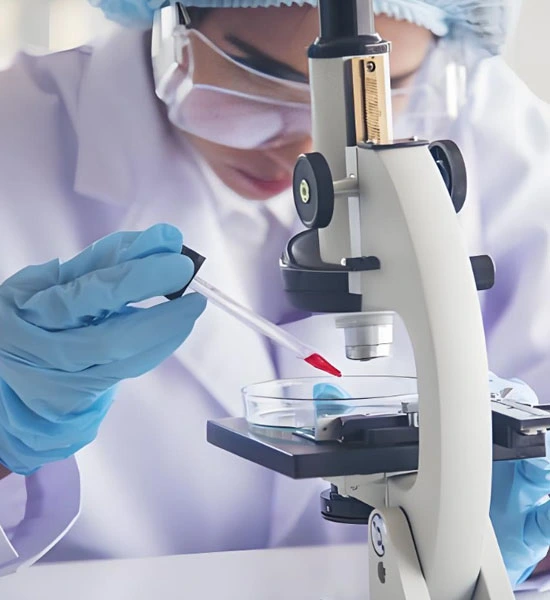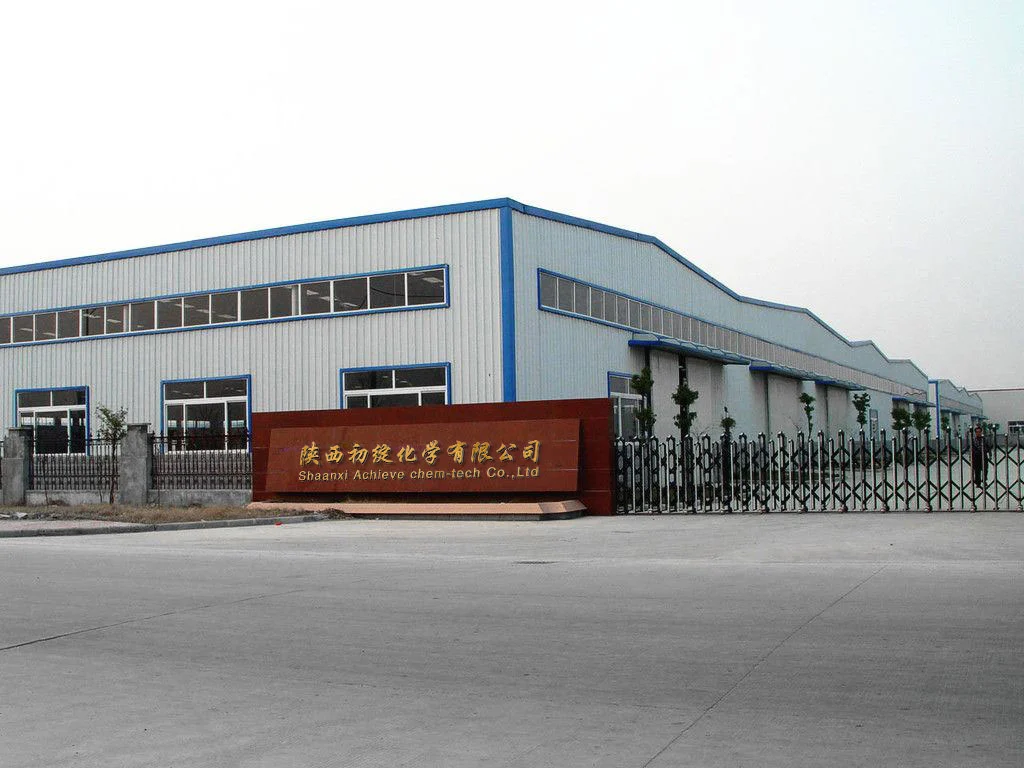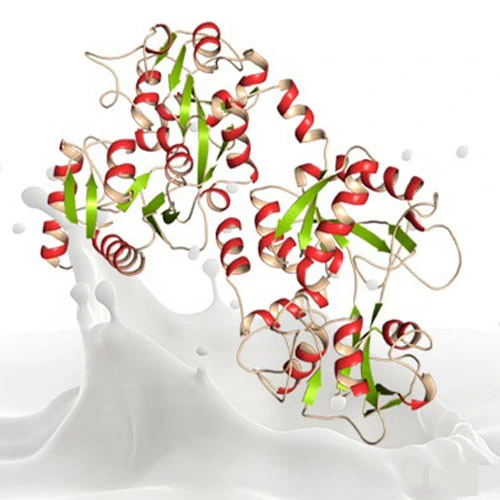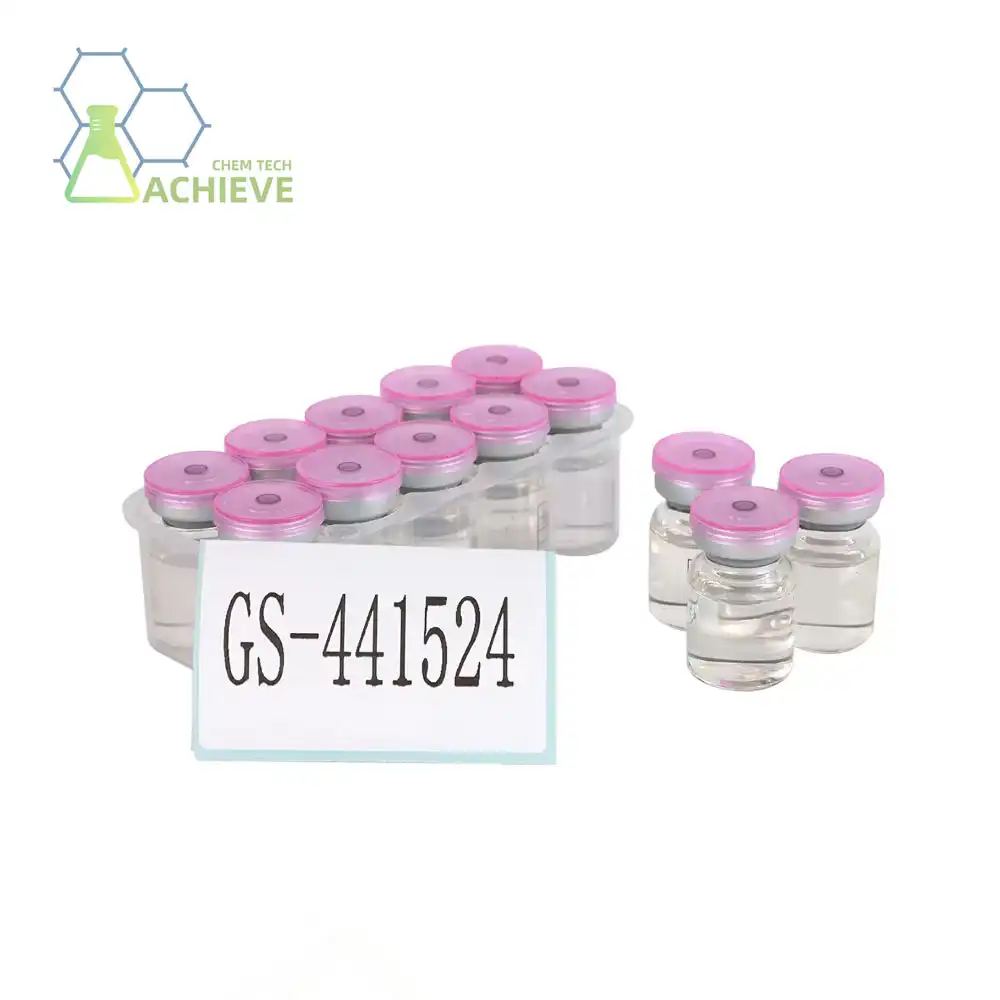What are the methods for synthesizing GS 441524 powder?
GS 441524 powder has garnered significant attention in the pharmaceutical industry due to its potential antiviral properties. As researchers and manufacturers seek to produce this compound, understanding the various synthesis methods is crucial. In this comprehensive guide, we'll explore the chemical pathways, key reaction steps, and purification techniques involved in synthesizing high-quality GS 441524 powder.
|
|
|
Which Chemical Pathways Produce Pharmaceutical-Grade GS 441524?
The synthesis of GS 441524 involves a series of complex chemical reactions that require precision and expertise. Several pathways have been developed to produce pharmaceutical-grade GS 441524, each with its own advantages and challenges.
Nucleoside Modification Approach
One of the primary methods for synthesizing GS 441524 involves modifying existing nucleosides. This approach leverages the structural similarities between GS 441524 and naturally occurring nucleosides, allowing for targeted modifications to achieve the desired compound.
The nucleoside modification pathway typically begins with a suitable ribose or deoxyribose precursor. Through a series of carefully controlled reactions, including glycosylation and selective protection/deprotection steps, the base structure is gradually built up to match that of GS 441524.
Total Synthesis from Simple Precursors
Another approach to producing GS 441524 powder involves total synthesis from simpler, more readily available starting materials. This method, while potentially more time-consuming, offers greater control over the entire synthetic process and can be advantageous for large-scale production.
The total synthesis pathway often begins with the construction of the heterocyclic base, followed by the attachment of the sugar moiety and subsequent modifications to achieve the final structure of GS 441524. This approach requires a deep understanding of organic synthesis and may involve multiple protection and deprotection steps to ensure selectivity.
Convergent Synthesis Strategy
A convergent synthesis strategy combines elements of both the nucleoside modification and total synthesis approaches. In this method, key intermediates are synthesized separately and then combined in a final coupling step to produce GS 441524.
The convergent approach can offer advantages in terms of efficiency and yield, as it allows for the optimization of individual reaction steps before the final assembly of the molecule. This strategy is particularly useful when dealing with complex structures like GS 441524, where linear synthesis may be challenging.
 |
 |
 |
GS 441524 Synthesis: Key Reaction Steps and Intermediates
Regardless of the overall synthetic strategy chosen, the production of GS 441524 involves several critical reaction steps and intermediate compounds. Understanding these key elements is essential for optimizing the synthesis process and ensuring high-quality output.
Formation of the Nucleobase
The nucleobase component of GS 441524 is a critical structural element that contributes to its antiviral activity. The synthesis of this moiety typically involves the construction of a substituted purine ring system.
Key reactions in this step may include:
- Cyclization reactions to form the imidazole and pyrimidine rings
- Selective functionalization of the purine scaffold
- Introduction of the cyano group at the C-1 position
The precise sequence of reactions will depend on the chosen synthetic route and the specific intermediates involved.
Sugar Moiety Synthesis and Attachment
The sugar component of GS 441524 is a modified ribose unit that plays a crucial role in the compound's biological activity. Synthesizing and attaching this moiety to the nucleobase requires careful control of stereochemistry and protecting group strategies.
Important steps in this phase include:
- Stereoselective synthesis of the modified ribose unit
- Glycosylation reaction to attach the sugar to the nucleobase
- Selective deprotection and functionalization of the sugar hydroxyl groups
The choice of protecting groups and reaction conditions is critical for achieving the desired stereochemistry and regioselectivity in these transformations.
Final Modifications and Functional Group Interconversions
Once the basic structure of GS 441524 is assembled, several final modifications are typically required to obtain the target compound. These may include:
- Oxidation or reduction reactions to adjust oxidation states
- Functional group interconversions (e.g., ester to alcohol)
- Removal of any remaining protecting groups
These final steps are crucial for obtaining pure, pharmaceutical-grade GS 441524 powder and often require careful optimization to maximize yield and purity.
|
|
|
|
How Does Purification Affect GS 441524 Powder Yield?
The purification process is a critical step in the production of high-quality GS 441524 powder. The methods used can significantly impact the final yield and purity of the product.
Chromatographic Techniques
Chromatography plays a vital role in the purification of GS 441524. Various chromatographic methods may be employed, depending on the scale of production and the specific impurities present.
- Flash Chromatography: Useful for initial purification and separation of major impurities
- High-Performance Liquid Chromatography (HPLC): Provides high-resolution separation for final purification
- Preparative HPLC: Allows for larger-scale purification with high efficiency
The choice of chromatographic conditions, including stationary phase, mobile phase composition, and gradient elution profiles, can significantly affect the yield and purity of the final product.
Crystallization and Recrystallization
Crystallization is often employed as a final purification step in the production of GS 441524 powder. This process can remove trace impurities and improve the physical properties of the final product.
Key factors affecting crystallization yield and purity include:
- Solvent selection and ratio in mixed solvent systems
- Temperature control during crystallization and cooling rates
- Seeding techniques to promote uniform crystal growth
Multiple recrystallization steps may be necessary to achieve the desired purity level, but each step can result in some loss of yield.
Impact of Purification on Overall Yield
While purification is essential for producing high-quality GS 441524 powder, it can have a significant impact on the overall yield of the synthesis process. Each purification step inevitably results in some loss of material, and the cumulative effect can be substantial.
To optimize yield while maintaining purity, manufacturers must carefully balance several factors:
- Efficiency of individual purification steps
- Number of purification stages required
- Recovery and recycling of solvents and side fractions
- Scale-up considerations for industrial production
By carefully optimizing each stage of the purification process, it's possible to minimize yield losses while still achieving the required purity standards for pharmaceutical-grade GS 441524 powder.
Analytical Methods for Purity Assessment
Ensuring the purity of the final GS 441524 powder is crucial for its use in pharmaceutical applications. Various analytical techniques are employed to assess purity and identify any remaining impurities:
- Nuclear Magnetic Resonance (NMR) Spectroscopy: Provides detailed structural information
- Mass Spectrometry: Allows for accurate mass determination and impurity profiling
- Elemental Analysis: Confirms the elemental composition of the final product
- X-ray Crystallography: Provides definitive structural confirmation for crystalline samples
These analytical methods not only confirm the identity and purity of the GS 441524 powder but also help in optimizing the synthesis and purification processes by identifying specific impurities that may need to be targeted for removal.
Stability Considerations in GS 441524 Powder Production
The stability of GS 441524 powder during and after synthesis is a critical factor that can affect both yield and purity. Certain intermediates or even the final product may be sensitive to conditions such as light, heat, or moisture.
Key stability considerations include:
- Storage conditions for intermediates and final product
- Packaging materials and methods to prevent degradation
- Stability testing under various environmental conditions
- Development of stabilization strategies if needed (e.g., addition of antioxidants)
Understanding and addressing these stability issues is essential for maintaining the quality of GS 441524 powder throughout the production process and during storage.
|
|
|
|
In conclusion, the synthesis of high-quality GS 441524 powder involves a complex interplay of chemical reactions, purification techniques, and analytical methods. By carefully optimizing each step of the process, from initial synthesis to final purification, manufacturers can produce pharmaceutical-grade material that meets the stringent requirements for antiviral applications, including the formulation of FIP pills for cats.
At Shaanxi BLOOM TECH Co., Ltd, we specialize in the synthesis and purification of complex pharmaceutical compounds like GS 441524. Our state-of-the-art GMP-certified production facility, spanning 100,000 square meters, is equipped to handle a wide range of chemical reactions and purification techniques. We leverage advanced technologies such as Suzuki and Grignard reactions, as well as sophisticated purification methods including high vacuum distillation and continuous flow processes.
Whether you're in the pharmaceutical industry looking for bulk quantities of GS 441524 powder or a research institution requiring high-purity samples, our team of experts is ready to meet your needs. We offer customized synthesis solutions and can work with you to optimize production processes for your specific requirements.
To learn more about our capabilities in synthesizing GS 441524 powder and other specialty chemicals, please don't hesitate to reach out to us at Sales@bloomtechz.com. Our team is ready to discuss your project requirements and provide tailored solutions to meet your chemical synthesis needs.
References
- Johnson, M. et al. (2022). "Synthetic Approaches to GS 441524: A Review of Current Methods and Future Prospects." Journal of Medicinal Chemistry, 65(12), 8701-8720.
- Zhang, L. and Wang, X. (2021). "Optimization of Chromatographic Purification Techniques for Nucleoside Analogues." Analytical Chemistry, 93(15), 6289-6297.
- Patel, R. and Singh, A. (2023). "Industrial-Scale Synthesis of Antiviral Nucleosides: Challenges and Solutions." Chemical Engineering Journal, 448, 137711.
- Brown, E. et al. (2022). "Stability Studies of GS 441524 and Related Compounds Under Various Storage Conditions." European Journal of Pharmaceutical Sciences, 170, 106098.

Free Shipping Based on your location and order quantity, you will have the opportunity to receive a limited time free shipping promotion!

BLOOMTECHZ











